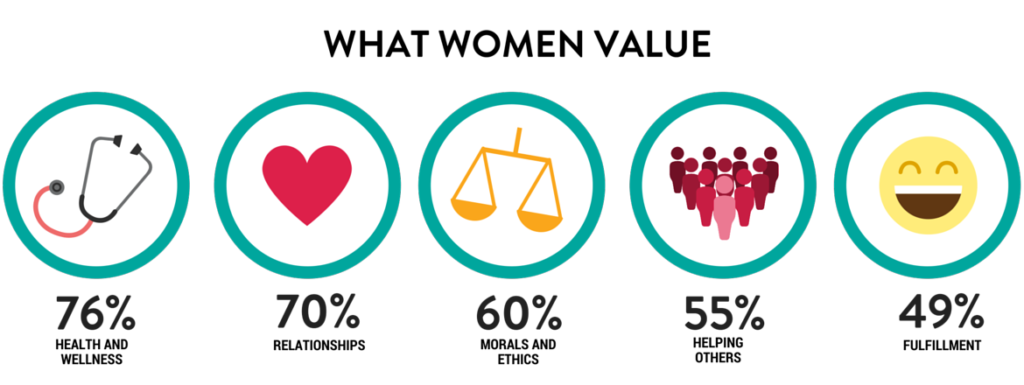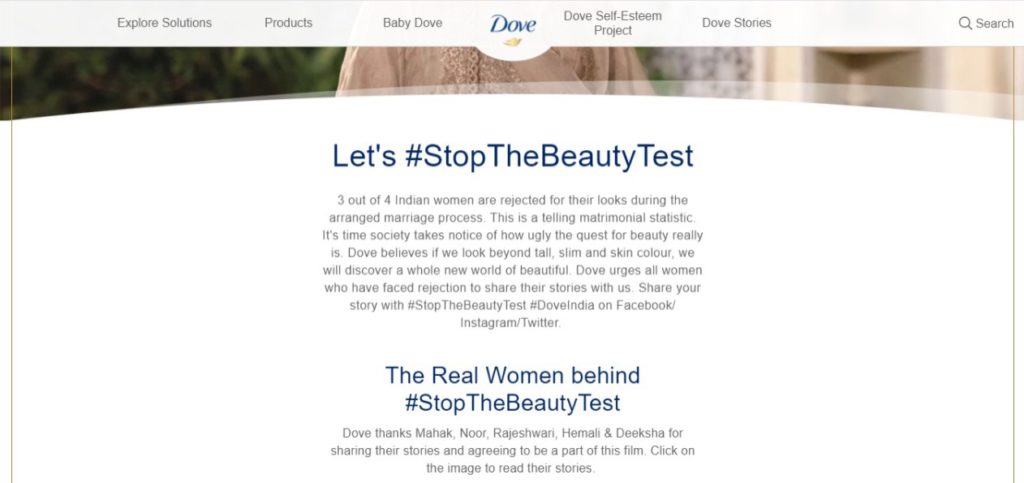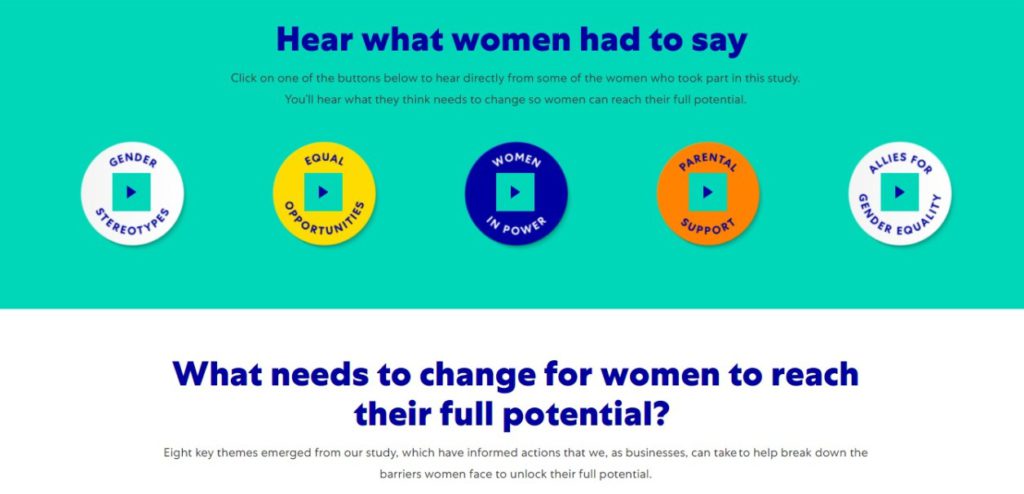10 Marketing Tactics to Target Female Users

Marketing tactics are the primary measures used to direct the promotion of a product or service to achieve specific objectives. A well-defined marketing plan is crucial to the success of any business. You need a long-term plan for achieving and sustaining a competitive edge in a specific market. Marketing tactics illustrate the advantages of your offering and inspire people to turn into your consumers.
Setting a marketing strategy is critical for keeping your team on track and performing well. It unites the entire organization around the common market, company, and product suppositions. Marketing tactics are also crucial for introducing campaigns and events that actively unite prospective consumers and create sales, build brand recognition, and solidify existing customer relationships.

Your marketing tactic should determine objectives that ascertain how to measure success and the efforts necessary to attain your targets. It should also establish who will benefit the most from your service or product, how much you understand about the target audience, the advantages of utilizing your good or service, how to approach and interact with your ideal consumer, and how to create a stable competitive advantage. Your tactic directs your day-to-day marketing activities. It helps keep the team fixated on what matters most—acquiring, retaining, and growing customers.

How Gender Influences Marketing
Different tactics for marketing to different genders are critical to the success of your company’s processes. Those who cannot understand the different requirements and preferences of various genders risk missing the target with their campaigns, thereby failing. As a marketer, you must carefully examine your target audience to evaluate which marketing tactic is appropriate for your product. If you can meet their specific needs, you could expand your customer base significantly. Here’s how marketing differs depending on gender.
1. Communicating information
Let’s take the example of two genders, i.e., men and women. Successful marketing requires understanding the differences between men and women, and communicating effectively with both. Some marketing strategies for men include providing all the essential information initially and background information later.
In terms of laying the groundwork for female audiences, offering background information may be helpful. Direct and instructive messages, suggestive humor, and competitive challenges are all required for men. Women are more vulnerable to visual aspects of real-life activities.
2. Shopping experience
A significant difference exists between how men and women interpret a pleasant shopping experience. For example, women, in general, prefer face-to-face communication, whereas men would want convenient parking and better store inventory. Stores intended to attract male shoppers may place a greater emphasis on keeping the racks stuffed with items that men might want to buy. Stores that want to attract female audiences may place greater focus on making sure their salespeople are polite, pleasant, knowledgeable, and skilled about the products they sell.
3. Varied decision-making styles
Women collect as much information as they can about the product, form a complete picture of it in their heads, and then make the purchase. It narrows their list down, and as a result, makes the decision-making process more precise. Men, on the other hand, use elimination to make shopping decisions. They decide on a specific feature or quality that an item should have. Men completely eradicate some options if they lack that feature.
4. Gender stereotypes around products
Gender identification is another difference in the marketing approach between men and women. Men are more susceptible to gender stereotypes. In other words, whether a product is considered feminine is more important to men than whether it is helpful. Women are less concerned with a product’s gender identity. That gives more options to the female audience.
10 Useful Tips for Marketing to Women
Marketing to women is not the same as marketing to male audiences. Women are a critical demographic for many businesses. They are the primary decision-makers in most homes, and they account for a sizable proportion of the workforce as well.
The art of marketing to women may not be as simple as it appears, and the online marketing tactics needed can be more demanding. Women have distinct needs from men, which can be tough to comprehend. Here are ten marketing tactics (with examples) to effectively target the female audience.
1. Research thoroughly
All men are not the same, and neither are all women. Begin by narrowing your focus to a specific demographic. Women are multifaceted individuals with various needs, habits, interests, and life experiences. Begin with a few distinctive kinds of data before launching a marketing tactic. Site usage statistics can reveal how many visitors to the site are women, and how they act on the site in contrast to their male counterparts.

You can also use customer data to learn about purchasing patterns and use marketing data to gain more insight into specific audiences. This type of insight can help you measure if your marketing tactics are working and can be effective in tailoring experiences for women in terms of ad copy, creative assets, and offers.
The “Hear What You Want” campaign by Beats is an example of researching your target audience. It featured American athletes wearing Beats headphones to help them get “into the zone,” drowning out the sounds of their critiques and competitors to focus on optimism and motivating thoughts before competing.
After analyzing the athletes’ listening habits, the team discovered how to use music to improve concentration and self-confidence. This creative work harnessed music’s power to move, inspire, and empower people, allowing them to rediscover themselves and be the best versions of themselves in any situation.
2. Use stories of women
When it comes to marketing to women, telling women’s stories is one of the simplest and fool-proof tactics. Integrating the journeys of women into your branding can help you reflect on and engage with women both inside and outside your target industry. Each woman’s experiences are unique to her. You can create deep emotional connections with your female audience by utilizing their stories for online marketing.
Also, when you collect stories from women of various socioeconomic, racial, and demographic backgrounds, it significantly increases your visibility and reaches. Furthermore, it gives valuable data that you wouldn’t have received otherwise.
Nivea succeeded in touching the hearts of many with its social initiative titled “Mom’s Touch.” It has helped bring up stories of exceptional mothers. The campaign assisted Nivea in striking a chord with its customers.
3. Tie up with influencers for online marketing
Women largely dominate the influencer marketing space, and hence, using influencers to promote your brand can be one of the most striking online marketing tactics. Female influencers, in most cases, attract an audience base of other women, making them perfect channels for women-centric brands.
Remember, not every successful influencer campaign involves Snapchatters. Micro-influencers and even regular brand customers are frequently used to raise awareness about a brand, commodity, or service. Influencer marketing helps nurture more trust and credibility than traditional advertising.

The #DoYou campaign by Puma was a global endeavor to empower women to embrace their inner strength. Cara Delevigne was the face of the campaign, which also featured the likes of Kalki Koechlin, Lisa Haydon, and Jacqueline Fernandez. What particularly stood out was that it included inspiring stories of all these women in the form of short clips.
4. Break stereotypes
Marketers frequently make the error of categorizing all women into one big target group. Although women are often lumped together as a single group in society, each person is a unique, multifaceted individual with a wide range of interests and life experiences. The good news is that modern brands are already aware of this, and have segmented their messaging into categories such as “new mothers,” “single mid-20s urbanite,” and so on. Consider the requirements, desires, and triggers of the target audience after narrowing your marketing demographics. Attempting to sell to them solely as “women” cannot be a long-term marketing strategy.
Saffola’s Rakhna Heart Ka Khayal ad reversed gender roles and featured a modern couple. It depicts a husband looking after his wife, breaking away from the stereotypical portrayal of a woman caring for her husband and the family’s health.
5. Women prefer to spend for a cause
Many women would opt to buy from brands that consider donating a portion of their profits to causes they believe in. They feel as if they are not only spending money on their wants and needs, but are also helping and supporting causes. Distribute messages emphasizing how supporting your brand means supporting your cause. You can instill in your customers the belief that by purchasing from your brand, they are helping your business do good in their community.
Vistara is a joint venture between Singapore Airlines and the Tata Group. As part of its “Fly the New Feeling” venture, it had teamed up with Salaam Baalak Trust, a non-profit and non-governmental organization that supports street children, to fly 12 children on its inaugural flight. A two-minute film captured the children’s absolute joy of flying for the first time.
6. Employ more women in your team
Including more women in your team is one of the most effective ways to market to women. Employ women from all walks of life, who can bring various perspectives to your company. Hiring women exposes your brand to knowledge and a human layer critical to successful campaigns, which is not available from single-gender teams.
Bumble is a dating app created by a woman to improve the app-dating experience for fellow women. In 2019, they collaborated with Serena Williams to produce an engaging film about women creatives challenging gender stereotypes.
7. The content should demonstrate how the product/service will help
Your advertisements and overall content should emphasize how much better life will be once the consumers buy the product/service. When showing product benefits in your content, make sure you make it high-quality and meaningful. Always add value to what you’re offering. If your audience cannot relate to your product or message, they will struggle to see how your product will benefit them. Women should have the impression that your brand understands them.
SuperBotttoms is a sustainable Indian brand for mom and baby essentials. One of their highest selling products is the cloth diaper for babies. They marketed this product with an extensive demo video that showcased the different types of the diaper, and justified its reusability. The video also explained how and when to use the product, while staying focused on the pain points pertaining to diapers every new mom faces.
8. Celebrate diversity
We’ve arrived at a point where women are prouder of their diversity than ever before. When creating a marketing tactic, be mindful of all types of women, including trans women, women of color, black women, and so on. Appreciating their differences in identities and exploring their interests will help your business go a long way. Companies have a better chance at success with their campaigns and products if they learn about each woman’s unique needs and communicate accordingly.

Dove’s #StopTheBeautyTest campaign took us through real-life stories of rejection faced by women when looking for life partners, and how it impacts their mental health negatively. It has challenged these norms through a series of campaigns with a powerful social message—physical appearance isn’t necessary. With the campaign, Dove reinforced its commitment to empowering women to break free of the beauty bias.
9. Understand the needs of women
Women have different needs than men, and because of gender stereotypes, they can be challenging to understand. There are, however, some universal aspects of women’s lives that can help you design your advertising campaigns. When it comes to purchasing, women are now the primary decision-makers. When designing graphics for female audiences, keep in mind what interests them. For those who truly understand what women want, the female segment of the market is a gold mine waiting to be explored.

Mars launched #HereToBeHeard, a global campaign to raise women’s voices from all sectors. They included women across all races, ages, religions, etc., to shape a more open business environment, and create a world that nurtures all women and helps them thrive. In the run-up to International Women’s Day, the female empowerment campaign asked women all over the world “what needs to change for them to reach their full potential.” It enabled women to call for systemic change through personal stories.
10. Focus on the product’s value
Consumers are becoming more aware of the values, practices, and beliefs that a company represents. The message of a brand must reflect the target audience’s values. Aim to have a brand that seeks to promote the same values as your female audience. Make corporate social responsibility (CSR) a primary focus to help the community understand and contribute meaningfully to causes that are important to women.
Coca-Cola places a strong emphasis on sustainability as a brand. Its key areas of operations are climate, packaging, agriculture, water stewardship, and product quality. The core message is “World Without Waste,” and they intend to collect and recycle bottles, make their packaging recyclable, and return all water used in the production of their drinks to nature to ensure water security. They hope to reduce their carbon footprint by 25% by 2030.
Because of the various levels of intersectionality encountered by women in today’s society, there is no one-size-fits-all approach to marketing tactics for women. To effectively engage with female groups, it is critical that your messaging aligns with their shared values and needs.
Women are an increasingly educated, entrepreneurial, and driven demographic, shaping purchasing trends and moving vast sums of money around the world. Brands must target female audiences with informed, researched, and data-driven marketing tactics. Take the time to learn about your female audience and the issues they face. When your brand is able to connect with women, the results will astound you.
Key Takeaways
- When developing your brand voice, consider factors, such as race, age, language, socioeconomic status, sexual orientation, and religion of your female demographic.
- Trust is the most powerful component of any marketing or business transaction. Your female audience’s loyalty will grow as you foster a community and build trust.
- You need to focus on the product value and understand the intrinsic needs of women when marketing to them.
FAQs
It is necessary to keep your messaging simple yet relatable. Having a strong and visually appealing campaign can further aid in achieving success with women.
Studies show that women control more consumer spending as compared to men. Women are also more likely to research a product before making a purchase decision, so it’s important that their questions are answered, and their concerns addressed. Brands are required to focus on these aspects when marketing to women.
The most effective ways to market to women are as follows:
– Understanding their needs and desires
– Creating content that speaks directly to them
– Targeting them with personalized messages
Latest Blogs
Learn how to rank on AI search engines like ChatGPT, Perplexity, and Gemini by optimizing your content for authority, structure, and relevance. Stay ahead in AI-driven search with this strategic guide.
Explore the best healthcare SEO services for your medical practice. Improve online visibility and effectively reach more patients in need of your services.
Discover top social media agencies specializing in banking solutions, enhancing financial services and driving engagement.
Get your hands on the latest news!
Similar Posts

Content Marketing
4 mins read
11 Best B2B Content Marketing Agencies for B2B Companies in 2024

Content Marketing
5 mins read
Top ecommerce Marketing Agencies with Proven Strategies for 2024

Content Marketing
5 mins read